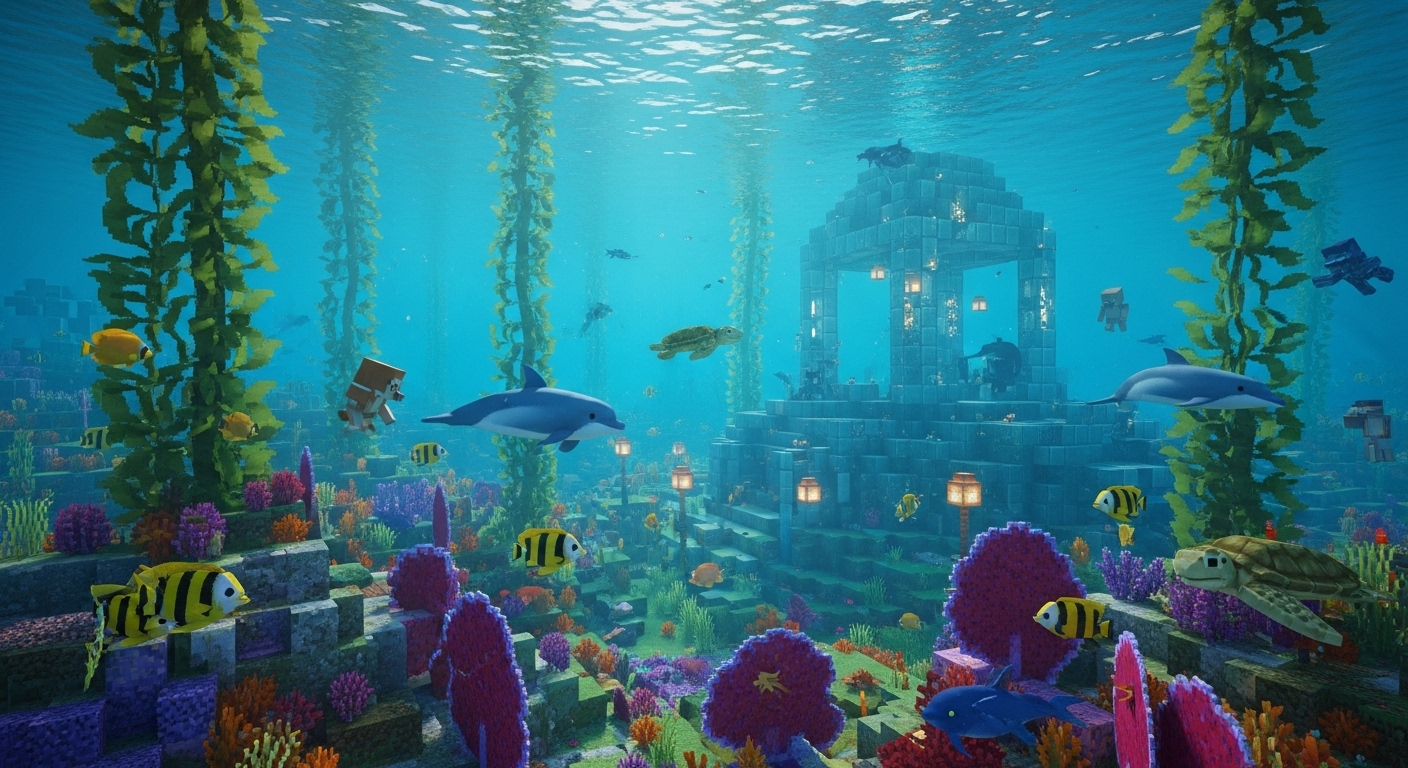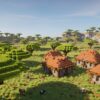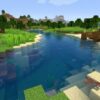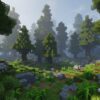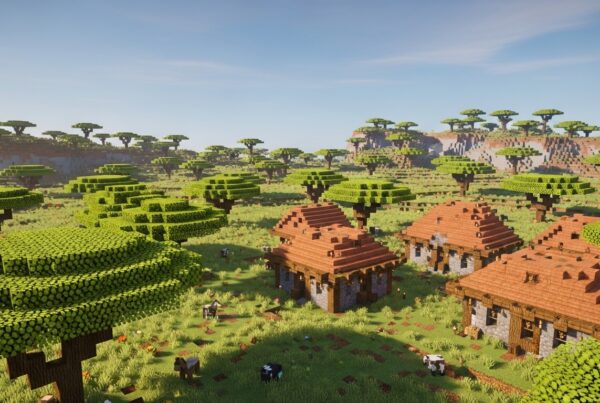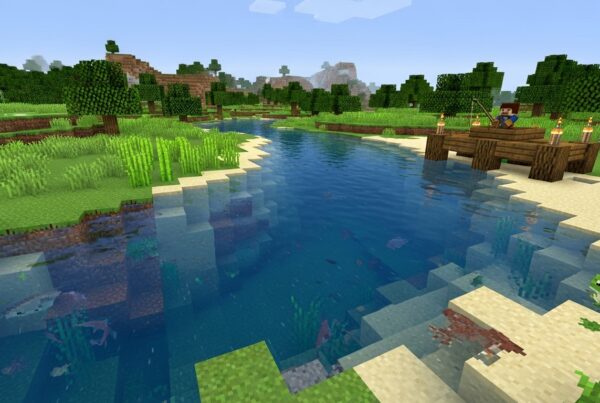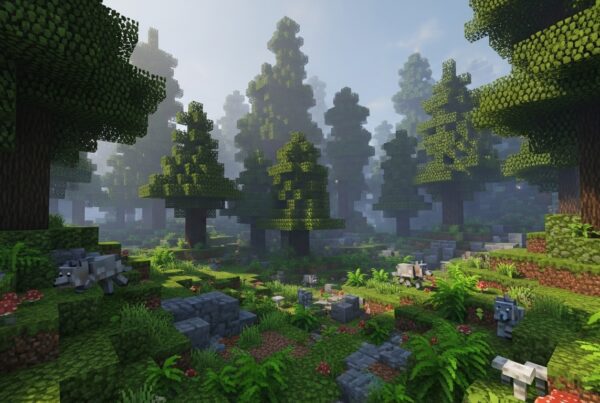The Ocean Biomes in Minecraft are among the most expansive and diverse environments in the game. These vast underwater worlds are filled with coral reefs, shipwrecks, frozen icebergs, and ancient monuments waiting to be explored. Whether you’re hunting for rare loot, building an underwater base, or simply exploring the depths, understanding ocean biomes is essential to mastering Minecraft’s aquatic frontier.
Overview of Ocean Biomes
Minecraft’s oceans aren’t just one type — there are several variations, each with unique temperatures, water colors, and ecosystems. These range from warm tropical waters to icy, frozen seas, each offering different mobs, resources, and terrain.
Types of Ocean Biomes
- Warm Ocean – Clear blue water, coral reefs, and tropical fish.
- Lukewarm Ocean – Calm waters with dolphins and seagrass.
- Deep Lukewarm Ocean – A deeper version with more Drowned spawns.
- Ocean (Regular) – Neutral waters filled with kelp and cod.
- Deep Ocean – Darker depths with ocean monuments and guardians.
- Cold Ocean – Murky waters with salmon and gravel seafloors.
- Deep Cold Ocean – Similar to Cold Ocean but much deeper.
- Frozen Ocean – Icy surface waters and floating icebergs.
- Deep Frozen Ocean – Deep, dark waters beneath frozen layers.
| Biome Type | Water Temperature | Common Mobs | Notable Features |
|---|---|---|---|
| Warm Ocean | Hot | Tropical Fish, Pufferfish, Dolphins | Coral Reefs, Sand Floors |
| Lukewarm Ocean | Mild | Cod, Salmon, Dolphins | Sandy Seafloor |
| Deep Lukewarm Ocean | Mild | Cod, Drowned | Shipwrecks, Deep Water |
| Ocean | Neutral | Cod, Squid | Kelp Forests |
| Deep Ocean | Neutral | Guardians, Drowned | Ocean Monuments |
| Cold Ocean | Cold | Cod, Salmon | Gravel Bottoms |
| Deep Cold Ocean | Cold | Drowned | Ravines |
| Frozen Ocean | Freezing | Polar Bears, Drowned | Icebergs |
| Deep Frozen Ocean | Freezing | Drowned | Blue Ice, Icy Depths |
Environmental Features
Each ocean biome has its own visual and environmental characteristics:
- Warm Oceans feature turquoise waters, sand floors, and vibrant coral reefs.
- Cold and Frozen Oceans are darker, with gravel floors and ice formations.
- Deep Oceans have limited light and can reach depths below Y-level -40.
Oceans often border beaches, rivers, and cliffs, making them ideal for exploration by land or sea.
Mobs Found in Ocean Biomes
The ocean is alive with both friendly and dangerous mobs. Knowing what to expect will make your adventures safer and more rewarding.
Passive and Neutral Mobs
- Fish – Cod, Salmon, Tropical Fish, and Pufferfish appear across various biomes.
- Dolphins – Found in most temperate waters. Feed them raw fish to guide you to shipwrecks or ruins.
- Turtles – Usually spawn on beaches but swim in nearby ocean waters.
Hostile Mobs
- Drowned – Zombie variants that spawn underwater or in ruins. Can carry tridents, fishing rods, or nautilus shells.
- Guardians – Found around ocean monuments; attack players with laser beams.
- Elder Guardians – Larger, stronger versions that cause Mining Fatigue when nearby.
Structures and Underwater Features
Ocean biomes contain some of Minecraft’s most iconic structures, offering valuable loot and unique challenges.
| Structure | Location | Key Loot | Mobs Present |
|---|---|---|---|
| Shipwreck | All Ocean Types | Treasure Maps, Iron, Emeralds, Enchanted Books | Drowned |
| Ocean Monument | Deep Ocean | Sponges, Prismarine, Gold Blocks | Guardians, Elder Guardians |
| Ocean Ruins | Cold & Deep Cold Oceans | Enchanted Books, Fishing Rods, Coal | Drowned |
| Coral Reefs | Warm Ocean | Coral Blocks, Coral Fans, Tropical Fish | Fish |
| Icebergs | Frozen Ocean | Packed Ice, Blue Ice | None |
| Underwater Caves & Ravines | Deep Ocean Variants | Ores, Stone, Coal | Drowned |
Structure Highlights
- Shipwrecks: Usually contain 1–3 loot chests, including explorer maps and rare items.
- Ocean Monuments: Massive prismarine temples guarded by three Elder Guardians. Contain sponge rooms and gold blocks.
- Ocean Ruins: Clusters of stone ruins that often hide treasure maps.
- Coral Reefs: Found in Warm Oceans, filled with colorful coral and tropical fish. Harvest coral with Silk Touch tools.
- Icebergs: Found in Frozen Oceans, made from packed and blue ice — perfect for decoration or ice farms.
Resources and Loot
Exploring the ocean rewards players with some of the rarest materials in Minecraft:
- Prismarine and Sea Lanterns – Found in ocean monuments.
- Sponges – Naturally found in monument sponge rooms; can be dried in a furnace.
- Coral Blocks and Fans – Harvested from coral reefs with Silk Touch.
- Kelp and Seagrass – Renewable, useful for compost or fuel.
- Nautilus Shells – Dropped by Drowned; combine with a Heart of the Sea to craft a Conduit.
- Heart of the Sea – Found in buried treasure chests.
- Tridents – Rare drops from Drowned mobs.
Survival and Exploration Tips
Exploring the ocean can be dangerous, but with preparation, it becomes one of Minecraft’s most rewarding adventures.
Recommended Equipment
- Respiration III and Aqua Affinity helmet enchantments for better underwater breathing and mining.
- Depth Strider boots to move faster underwater.
- Potions of Water Breathing and Night Vision for longer dives.
- Milk Buckets to remove Mining Fatigue from Elder Guardians.
Combat and Defense
- Use cover to block Guardian laser beams.
- Carry a Trident enchanted with Impaling for underwater combat.
- Use a Shield or ranged weapons to handle Drowned mobs.
- Place Doors or Signs for quick air pockets while exploring ruins.
Exploration Strategy
- Travel the surface in a Boat for faster movement.
- Build and activate Conduits to gain permanent underwater breathing and vision.
- Use Explorer Maps from Cartographer Villagers to locate Ocean Monuments.
- Feed Dolphins raw fish to lead you to nearby shipwrecks.
Unique Gameplay Opportunities
- Build an Underwater Base using glass or prismarine for stunning views.
- Create a Kelp Farm for renewable XP or fuel.
- Farm Coral and Seagrass for decoration or trading.
- Hunt for Buried Treasure using maps from shipwreck chests.
- Use Bubble Columns made with Soul Sand or Magma Blocks for fast vertical travel.
Differences Between Java and Bedrock Editions
While both game editions feature ocean biomes, there are small gameplay differences:
- Structure Generation: Bedrock Edition spawns ocean ruins and monuments more frequently.
- Mob Behavior: Trident drop rates and Drowned spawn patterns vary slightly.
- Lighting: Java Edition has dimmer underwater lighting.
- Conduit Range: Slightly larger effect radius in Bedrock Edition.
Frequently Asked Questions
Which ocean biome has coral reefs?
Only the Warm Ocean biome features coral reefs and tropical fish.
How do I find an Ocean Monument?
You can purchase an Ocean Explorer Map from a Cartographer Villager or explore Deep Ocean biomes. Dolphins can also lead you to monuments and ruins.
Where can I find sponges?
Sponges are exclusive to Ocean Monuments and appear in special sponge rooms. They can be dried in a furnace for reuse.
Which biomes have icebergs?
Frozen Ocean and Deep Frozen Ocean biomes generate icebergs made of packed and blue ice.
What’s the best gear for underwater exploration?
A Respiration III helmet, Depth Strider III boots, and Water Breathing Potions are essential. Using a Conduit provides unlimited air and night vision underwater.
Conclusion
The Ocean Biomes in Minecraft offer a perfect balance of beauty, danger, and adventure. From coral reefs teeming with life to mysterious sunken ruins and ancient monuments, every dive can uncover new treasures and experiences. With the right equipment, strategy, and knowledge, you can conquer the depths and build your legacy beneath the waves.
